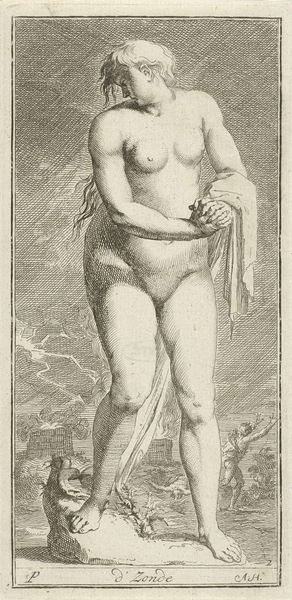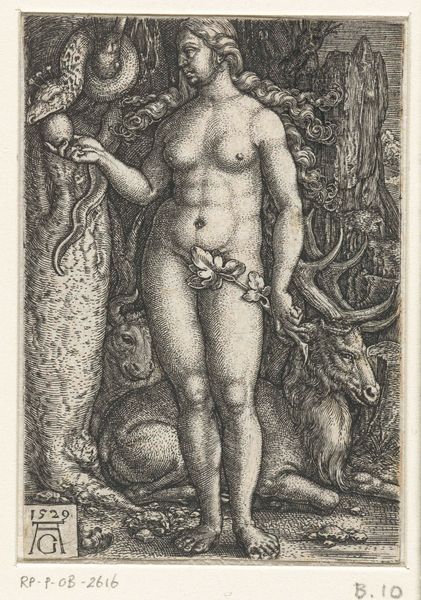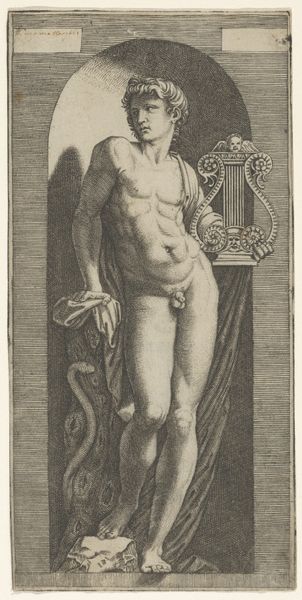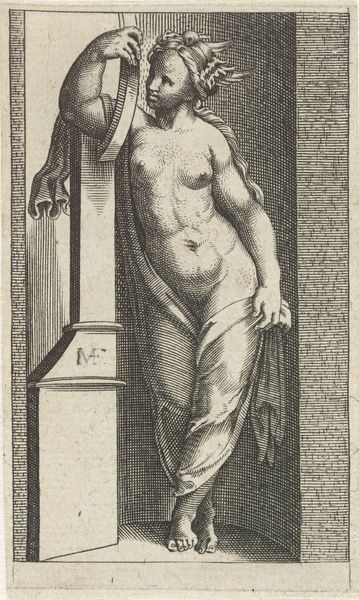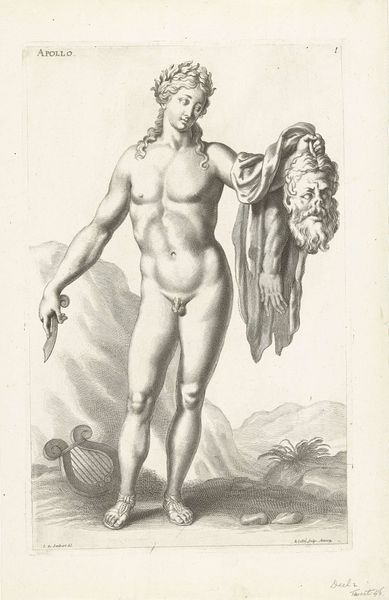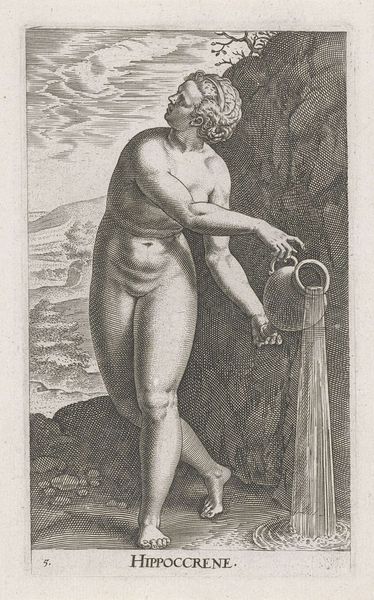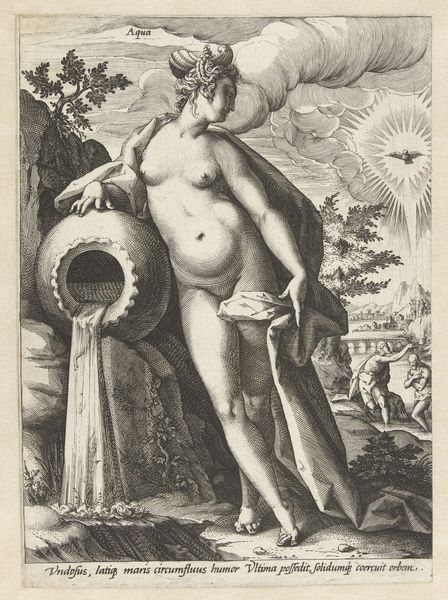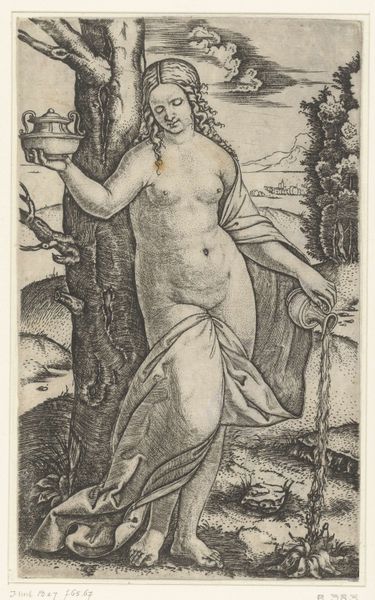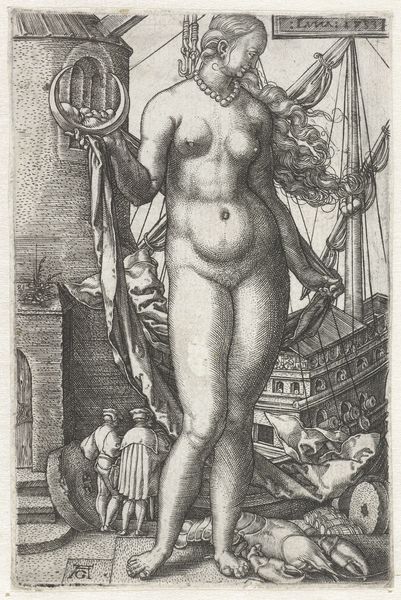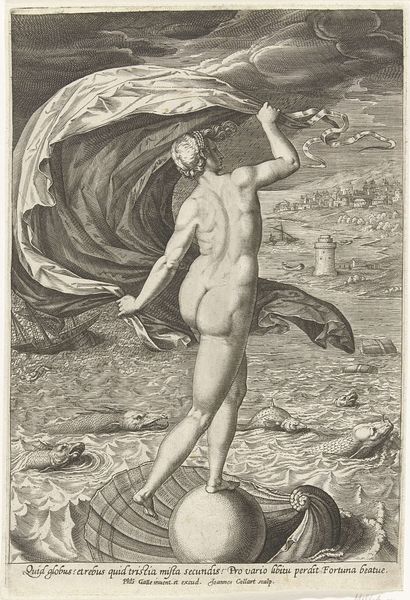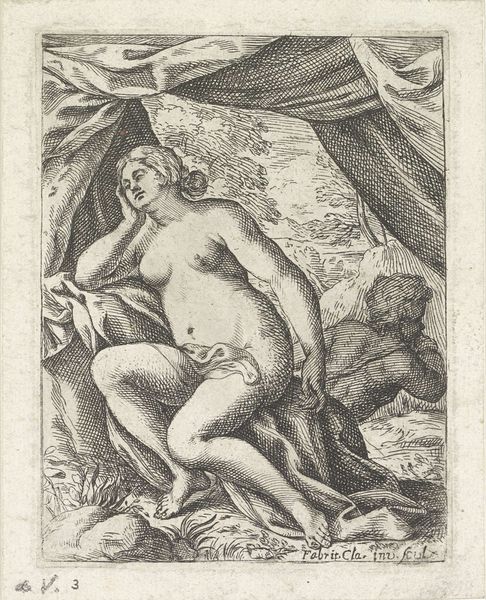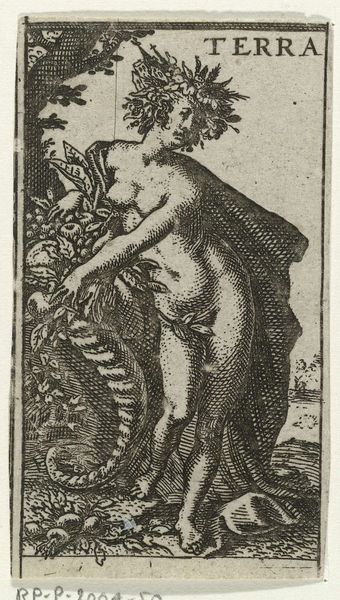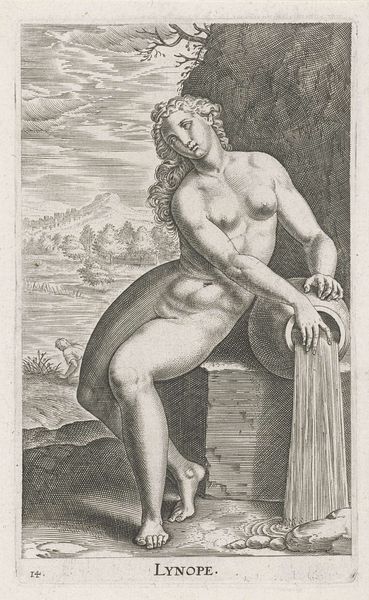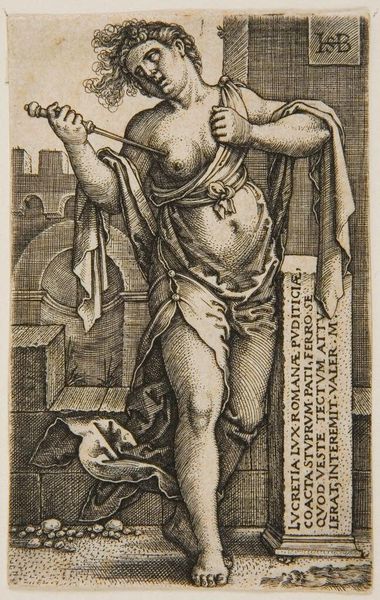
print, engraving
#
baroque
# print
#
figuration
#
history-painting
#
nude
#
engraving
Dimensions: height 187 mm, width 109 mm
Copyright: Rijks Museum: Open Domain
Curator: Here we have Nicolaes de Bruyn’s engraving, "Lucretia met dolk tegen haar borst," placing it within the broad timeframe of 1581 to 1656. What’s your immediate reaction? Editor: Stark. I am immediately struck by the theatrical quality and dramatic light, typical of the Baroque style. There's a tension between the graphic nature of the subject and the very precise lines. Curator: The power of this image rests so heavily on Lucretia as a figure. The engraving portrays the Roman noblewoman who, according to legend, committed suicide after being raped by Sextus Tarquinius. This story has long served as a powerful commentary on patriarchal power, the loss of agency and honor. Editor: The choice to portray her nude is very loaded. Lucretia is simultaneously vulnerable and powerful here. We can read symbols of purity – a specific classical tradition which then comes under tension when considered with the backdrop and details of a violation. She’s an almost impossible confluence of themes here. Curator: Yes, the setting reinforces this, there's an erotic scene discreetly added to the background— a reference to her violation. I can’t help but ask how the story of Lucretia translates into images such as these throughout time, who exactly are they for? Do they represent warnings to other women or male fantasies disguised as morality tales? Editor: This engraving does raise important questions about who controls visual narratives. We can consider how that same blade – at once an instrument of patriarchal violence - ultimately becomes a symbol of her defiance. And Lucretia has always been a symbol—one open to centuries of interpretation. The artist is intentionally referencing classical artistic interpretations of this historic violation. Curator: In our contemporary era, these dialogues surrounding depictions of gendered and sexual violence still ring painfully true. Nicolaes de Bruyn may be speaking about history, but we continue to grapple with it every day. Editor: Absolutely. This artwork serves as a poignant reminder of the need for an ongoing dialogue between art and the broader social constructs within which it exists. Thank you for that insight!
Comments
No comments
Be the first to comment and join the conversation on the ultimate creative platform.
